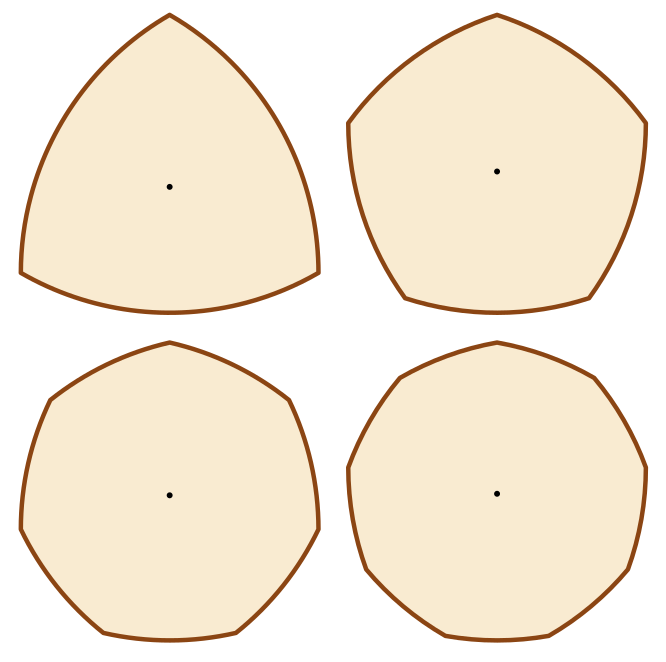Efficiency?
It can be shown that the circle is the closed curve with the shortest length for its area.
geometry - Among all shapes with the same area, a circle has the shortest perimeter - Mathematics Stack Exchange
Here is the proof. I will work in rectangular coordinates because the proof is the clearest in them. I will use coordinates x and y with parameter t.
Area: \( \displaystyle{ A = \frac12 \int \left( x \frac{dy}{dt} - y \frac{dx}{dt} \right) dt = \frac12 \int (x {\dot y} - y {\dot x} ) dx } \)
Length: \( \displaystyle{ L = \int \sqrt{ \left( \frac{dx}{dt} \right)^2 + \left( \frac{dy}{dt} \right)^2 } dt = \int \sqrt{ (\dot x)^2 + (\dot y)^2 } dt } \)
It seems difficult to solve this minimization problem, but a common trick is the method of Lagrange multipliers. One must minimize \( L - \lambda A \) for Lagrange multiplier λ. Using the Euler-Lagrange equations, one finds
\( \displaystyle{ \frac{d}{dt} \frac{\dot x}{\sqrt{(\dot x)^2 + (\dot y)^2}} + \lambda \frac{dy}{dt} = 0 } \\ \displaystyle{ \frac{d}{dt} \frac{\dot y}{\sqrt{(\dot x)^2 + (\dot y)^2}} - \lambda \frac{dx}{dt} = 0 } \)
Now rescale t into a new parameter variable s, representing the distance along the curve: \( ds = dt \sqrt{ (\dot x)^2 + (\dot y)^2 } \)
This gives us
\( \displaystyle{ \frac{d^2x}{ds^2} + \lambda \frac{dy}{ds} = 0 } \\ \displaystyle{ \frac{d^2y}{ds^2} - \lambda \frac{dx}{ds} = 0 } \)
It's easy to solve these two equations with trigonometric functions:
\( \displaystyle{ x = x_0 + r_1 \cos(\lambda s) + r_2 \sin(\lambda s) } \\ \displaystyle{ y = y_0 + r_1 \sin(\lambda s) - r_2 \cos(\lambda s) } \)
One finds the circle equation from them:
\( \displaystyle{ (x - x_0)^2 + (y - y_0)^2 = (r_1)^2 + (r_2)^2 } \)

